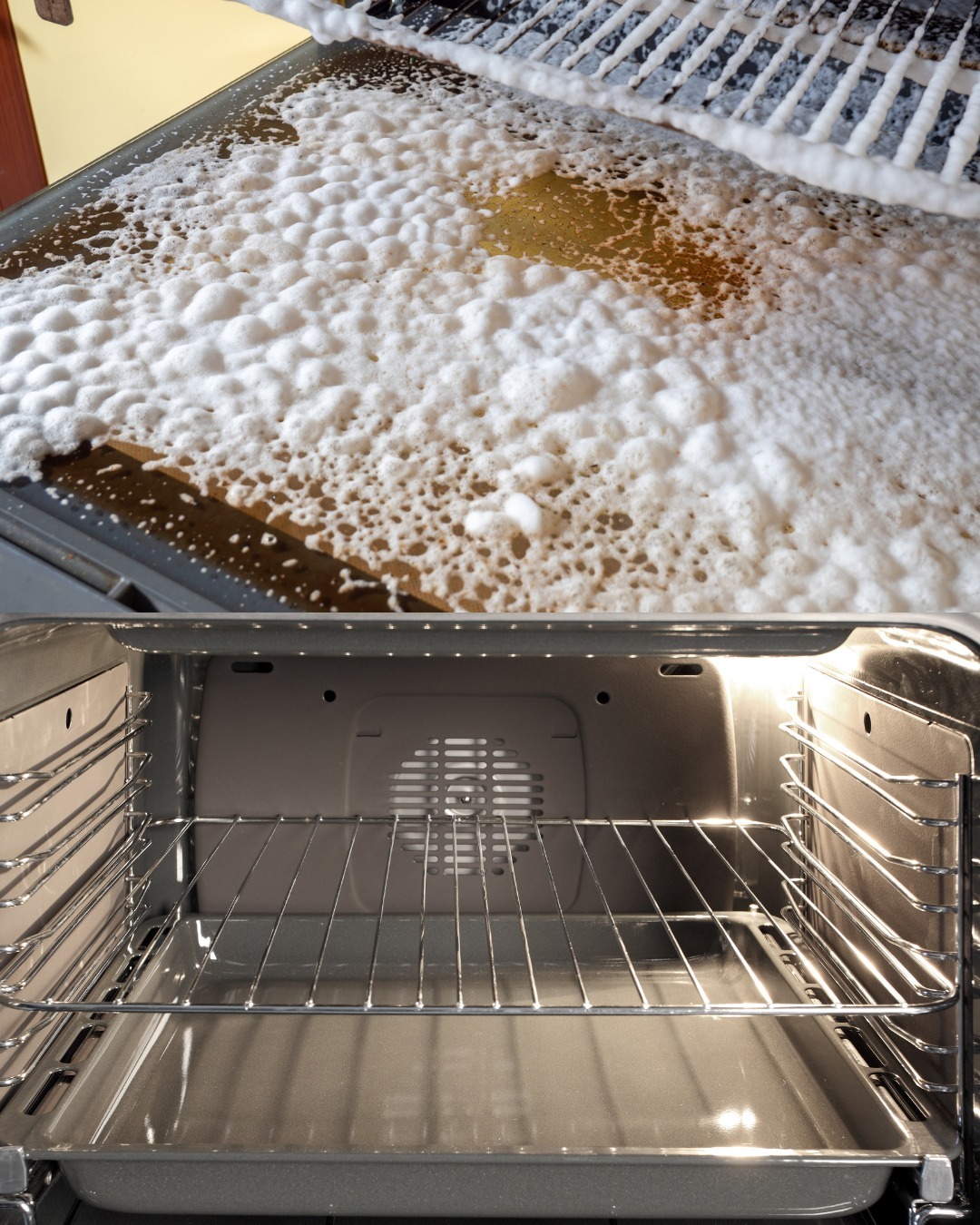ADVERTISEMENT
#### 3. **Scrub and Elbow Grease**
Once the baking soda and vinegar solution has had time to work, use a **scrub brush** (or a rough sponge) to scrub away the grime. Apply some pressure to areas with heavy buildup but be careful not to scratch the surface of the tray.
If you find that the grease is still tough to remove, you can add a bit more **baking soda** or **dish soap** and continue scrubbing. For **non-stick trays**, be sure to use a **soft sponge** to avoid damaging the non-stick coating.
#### 4. **Use Aluminum Foil for Extra Scrubbing Power (Optional)**
If you need extra scrubbing power for stubborn grease spots, try crumpling a small piece of **aluminum foil** and using it as a scrubber. Aluminum foil is an effective abrasive material that can help lift away hardened grease without causing too much damage to the surface of your oven tray. Just be cautious when using it on delicate trays like **non-stick** ones, as it may cause scratches.
#### 5. **Rinse Thoroughly**
Once you’ve scrubbed the tray, rinse it thoroughly with warm water to remove all soap, baking soda, and vinegar residue. This ensures that no cleaning solution is left behind, which could impact the taste of your food the next time you use the tray.
#### 6. **Dry and Polish**
After rinsing, use a **clean microfiber cloth** or **paper towel** to wipe down the tray. This will help remove any remaining moisture and prevent water spots. For an extra shine, you can rub the surface with a small amount of **lemon juice**, which will add a fresh scent and enhance the tray’s luster.
### Additional Tips for Deep Cleaning
– **Use Commercial Oven Cleaner**: If your tray has heavy, baked-on grease that won’t come off with the methods above, you may want to use a **commercial oven cleaner**. Follow the instructions on the label, and always wear **rubber gloves** to protect your hands from the harsh chemicals.
– **Avoid Harsh Scrubbing Tools**: Be careful with abrasive tools like steel wool or rough scrubbers. These can scratch or damage the surface of your tray, especially if it’s non-stick. Stick to softer sponges or brushes, or use **baking soda** as a safe, natural abrasive.
– **Regular Maintenance**: To avoid heavy build-up of grease and food, clean your oven tray after every few uses. A quick wipe-down with dish soap and water can go a long way in maintaining a clean tray and preventing stubborn stains from forming.
### Alternative Methods for Cleaning Specific Types of Trays
– **Stainless Steel Trays**: For stainless steel trays, a combination of **baking soda** and **vinegar** works great. To keep them shining, you can also use **olive oil** or a dedicated **stainless steel cleaner**.
– **Aluminum Trays**: Aluminum trays can be cleaned with the same methods as stainless steel but should be handled gently as aluminum can scratch easily. Avoid using harsh chemicals or abrasive scrubbers that can leave marks on the metal.
– **Non-Stick Trays**: For non-stick trays, always use a soft sponge and avoid harsh chemicals or scrubbing tools that can damage the coating. Use a mixture of **dish soap** and **baking soda** for safe and effective cleaning.
### When to Replace Your Oven Tray
Even with regular cleaning, oven trays can eventually wear out due to heavy use, scratches, or accumulated stains. Here are a few signs that it might be time to replace your oven tray:
– The tray is warped or dented.
– There are deep, permanent stains or scratches that can’t be cleaned away.
– The tray no longer cooks food evenly, or the non-stick surface is damaged.
### Conclusion
Cleaning your oven tray doesn’t have to be a daunting task. With a few simple ingredients and methods, you can keep your tray looking like new and ready for your next cooking adventure. Whether you’re using **baking soda**, **vinegar**, or a commercial cleaner, the key to maintaining a spotless oven tray is regular care and maintenance.
By following these steps, you’ll not only ensure a clean cooking surface but also improve your cooking experience. Happy cleaning!
ADVERTISEMENT
